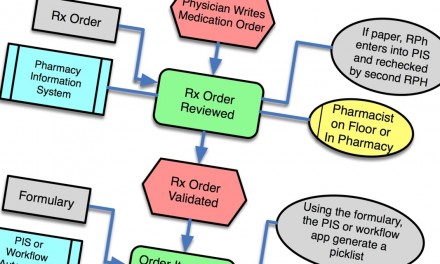Google announced the formation of a Health Advisory Council that includes an eclectic group of health care insiders. The result has been speculation on Google's plans ranging from an application for patients to store their medical information online to the acquisition of an EMR vendor.
The acquisition of an EMR vendor will render Google just another EMR vendor (admittedly with one with lots of money). What I wonder is how (or if) Google will go beyond their brand and Internet application platform to really differentiate and drive greater adoption of whatever vehicle the chose for the health care market.
A significant portion of the data that goes into an EMR (and that includes the whole alphabet soup of PHR and EHR) comes from medical devices. Device data is the most specific and exact data found in EMRs, and is the data that serves the bedrock for diagnosis and managing therapy. As a patients problem list or acuity increases (predominately due to chronic diseases) the amount of data generated by patient-attached medical devices increases exponentially. Manually entering medical device data into charting systems has the following problems:
- Data availability is delayed due to the lag between the reading and when the caregiver has a chance to enter it into the system (this lag is frequently measured in hours)
- Missing data results from readings that are taken, but never entered into the system
- Transposed data or typing errors the analog to illegible entries in paper charts
- Selecting the wrong patient for correctly entered data the analog to improper patient identification, a common patient safety problem
In hospitals the literature has reported the percent of data entered in error to range between the low teens and mid twenties. Im not aware of studies looking at similar activities in physician practices or patient homes.
Medical device connectivity is a requirement with growing awareness. Last week Rob Kolodner gave the keynote at a conference on medical device connectivity (the Improving Patient Safety Through Medical Device Interoperability and High Confidence Software workshop in Boston). The FDA has signaled that they are looking at regulating medical device interfaces that write straight to an EMRs database. And vendors continue to struggle with device connectivity with vendors creating open interfaces that only work with their own medical device or EMR (think Welch Allyn or AllScripts). Retrospective connectivity via HL7 is easy to develop, but expensive to deploy (each installation must be configured); prospective plug and play connectivity is the easiest to deploy, but requires that competing vendors work together (something they are traditionally loath to do).
Google may well acquire an EMR vendor. Given their strengths they will probably stay as close to consumer as possible, launching a PHR and/or acquiring a practice based EMR (rather than a hospital EMR vendor). In any event, the patient populations who will benefit the most, and be Googles greatest source of pressure to drive adoption, are those patients with chronic diseases. Care delivery for chronic disease is centered around medical device data glucometers, non-invasive blood pressure monitors, weight scales, and more. Leaving patients to manually enter this data themselves will not work for most patients, and sending caregivers to the home to gather readings will be too expensive.
Google is uniquely positioned to provide plug and play connectivity for any site with an internet connection or even a mobile phone. Actually creating the connectivity is something they have no experience with, but they have plenty of resources and smart people they can learn it the hard way, or use a connectologist to help. This is a potential differentiator and competitive barrier (because the industrys not going to support more than one pervasive connectivity method) for whoever gets there first.
To be more than just another EMR vendor, Google will have to do something different. Medical device connectivity is the biggest unmet need on the patient side of the equation. (On the systems side, there is interoperability between EMRs and prescribing and between providers and payors but theres already a lot of work being done here.) Their ability to deploy web applications could be leveraged in important ways.
Pictured right is the Google holiday logo commemorating the 50th Anniversary of Understanding DNA - April 25, 2003.
[Hat tip: iHealthBeat]



Recent Comments